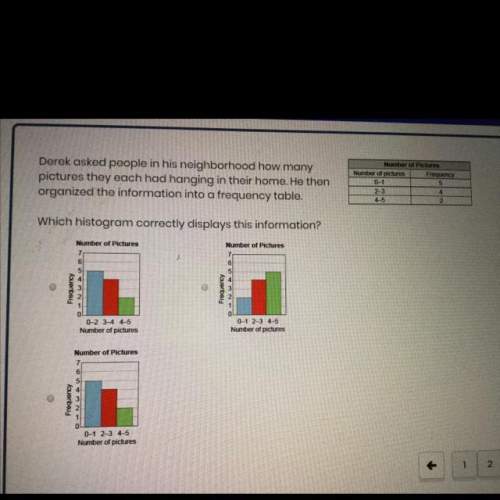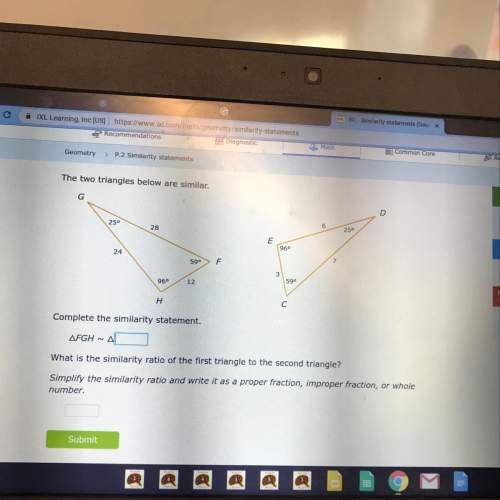
Mathematics, 03.05.2021 16:20, kylaprather06
WILL GIVE BRAINLIEST!!
A doctoral student wants to determine the relationship between steps per minute and the time it takes to walk 100 feet in minutes. Thirty trials are completed and the correlation coefficient between steps per minute and time in minutes is determined to be -0.543. Therefore, fewer steps per minute were related to longer time spans. How is the correlation affected if the units for time are changed from minutes to seconds?
The correlation and time measurement would change proportionally to one another.
The correlation would increase because changing the units for time would result in an increase in time values.
It is impossible to determine the amount of change experienced by the correlation.
The correlation would decrease because only the units for one of the variables changed.
The correlation would stay the same because the change in units for time would have no effect on it.

Answers: 2
Other questions on the subject: Mathematics

Mathematics, 21.06.2019 18:30, FailingstudentXD
Do some research and find a city that has experienced population growth. determine its population on january 1st of a certain year. write an exponential function to represent the city’s population, y, based on the number of years that pass, x after a period of exponential growth. describe the variables and numbers that you used in your equation.
Answers: 3

Mathematics, 21.06.2019 20:00, naimareiad
Ialready asked this but i never got an answer. will give a high rating and perhaps brainliest. choose the linear inequality that describes the graph. the gray area represents the shaded region. y ≤ –4x – 2 y > –4x – 2 y ≥ –4x – 2 y < 4x – 2
Answers: 1

Mathematics, 22.06.2019 00:30, gthif13211
I've been working on this for a few days and i just don't understand, it's due in a few hours. you. the direction of a vector is defined as the angle of the vector in relation to a horizontal line. as a standard, this angle is measured counterclockwise from the positive x-axis. the direction or angle of v in the diagram is α. part a: how can you use trigonometric ratios to calculate the direction α of a general vector v = < x, y> similar to the diagram? part b suppose that vector v lies in quadrant ii, quadrant iii, or quadrant iv. how can you use trigonometric ratios to calculate the direction (i. e., angle) of the vector in each of these quadrants with respect to the positive x-axis? the angle between the vector and the positive x-axis will be greater than 90 degrees in each case. part c now try a numerical problem. what is the direction of the vector w = < -1, 6 > ?
Answers: 1

Mathematics, 22.06.2019 01:10, calmicaela12s
A3cm×3cm\greend{3\,\text{cm} \times 3\,\text{cm}} 3cm×3cm start color greend, 3, space, c, m, times, 3, space, c, m, end color greend rectangle sits inside a circle with radius of 4cm\blued{4\,\text{cm}} 4cm start color blued, 4, space, c, m, end color blued . what is the area of the shaded region? round your final answer to the nearest hundredth.
Answers: 3
Do you know the correct answer?
WILL GIVE BRAINLIEST!!
A doctoral student wants to determine the relationship between steps per mi...
Questions in other subjects:

English, 20.08.2021 17:10



Mathematics, 20.08.2021 17:10


Mathematics, 20.08.2021 17:10

History, 20.08.2021 17:10

Mathematics, 20.08.2021 17:10









